Features
The global energy crisis
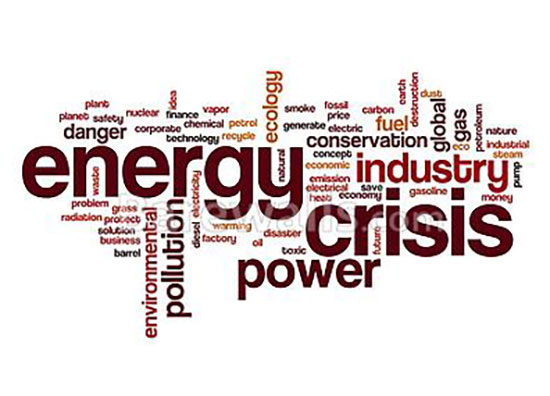
by Kumar David
Well no, that’s not true, the energy price and supply crunch is not global; North America and Russia are for the time being riding fine. It’s Europe, especially the UK and Germany, East Asia, China and India that are suffering bellyache. It is a conjunction of worldwide trends plus decisions in particular countries or regions that have triggered the crunch, but there are global trends at work as well. Supply side or supply chain hiccups will be reflected in shortages and high prices but this time there is a coincidence of more factors than the Covid pandemic to be blamed. It is not easy to depict the whole picture in a single essay but let me push some ideas in this column as world leaders gather for the COPE26 summit in Glasgow at the end of the month. Let’s get started by repeating a few facts that readers are familiar with.
Oil at this moment is over $80 a barrel and pointing upwards; the Dutch gas spot-market, the standard in Europe, is ten-times higher now than it was in the middle of 2020. Germany and Northern Europe are faced with severe gas and electricity bottlenecks; petrol shortages in the UK have led to mile long queues and inversely short tempers. There are short, medium and underlying longer term complications. The immediate problem in Northern Europe is that not enough Russian gas is reaching it through the existing pipeline and the EU has still to certify the recently completed Nord Stream-2 pipeline from Russia to Germany via the Baltic Sea. A further complication is that European buyers contracted for natural gas on long-term contracts which obligation Russia is dutifully fulfilling, but Europe’s additional needs will have to be bought at spot-prices on spot-markets. There is no obligation for Russia to supply additional amounts at any but prevailing market prices; selling gas is not a charity. This bottle neck will span the winter and how much further no one knows because the winds are metaphorically becalmed and post-covid recovery has no use-by date attached to it.
In the graph I have reproduced from the Institute of Energy Economics, JKM is the Japan-Korea Marker, Dutch TTV is a European spot-market and Henry Hub is a giant gas selling point in the USA. The huge difference between the first two (over $20 per MMBtu) and the last (less than $5 per MMBtu) is liquefaction and transport costs. It is not possible to foresee where future prices will go but it is certain that price volatility will dominate markets. What blithering bad luck just when we are toying with LNG fired electricity! Unfortunately for Sri Lanka at this time when the country is setting off down the unavoidable LNG road, prices are all over the place. Nevertheless gas is the least dirty of the fossil fuel options. It is imperative that the CEB and the CPC train staff for their future buying departments because market complexities are challenging and the LNG road is unescapable. (MM on the graph’s y-axis means million).
The medium-term outlook for energy supply and prices is clouded by the worldwide decarbonisation drive. Germany and the UK for example, decommissioned or mothballed coal-fired plant. They were in no rush to build gas-fired generation as there was a headlong rush for renewables, mainly wind-power. But the wind bloweth as it listeth, or to be more prosaic, wind generated electricity can change by large amounts at short intervals. Large unexpected changes in electricity output in Germany caused power-swings throughout the Northern European grid and destabilised the whole system. The European love affair with wind-power has fizzled but investment in conventional (carbon emitting) power-plant has been long neglected. Germany and the UK are now caught by the short and curlies. France, annoyed with the UK about a fishing dispute, has threatened to punch the UK well below the belt at a place where it hurts and that is slicing off virile electricity supplies.

India allowed its coal stocks to run down and is now a victim of power shortages. The electricity supply sector is influenced by green-lobbies (bless them) and so India dutifully switched on large scale to solar and renewables and went slow on gas-fired plant construction and mothballed coal-fired projects. This is a general remark as I am not in a position to name the actual power stations concerned. China is different; electricity supply is Central or Provincial state owned and subject to direction. Instructions were issued to cut-back coal power and now many provinces are suffering power shortages. Some industries are cutting back activity and the icy cold hand of winter beckons the northern parts of the country.
The long-term challenge is that the world must learn how to interface decarbonisation, the turn to renewables and futuristic alternatives within the big energy picture. Soon after you read these lines world leaders will be scratching their heads about how to achieve zero-carbon targets and hold global temperature rise to within 1.5 degrees C of pre-industrialisation levels. Will they manage or will we all be cooked in this earthly pressure cooker? I say they will fail and I am supported by the International Energy Agency which said on October 13 that the world will fall short of its 2050 energy reduction target by 60%! Let me explain why I am a pessimist. If it was only about fuel for electricity generation then technology can do it with some hiccups as we are well on the way; by about 2050 the world will get fossil-fuel fired electricity generation down to acceptable levels.
But the point is fossil fired electricity generation is not the biggest problem; it is industry, transport and all the rest that modern life involves. Eighty percent of global gross energy use at this time is from fossil-fuel. The big carbon polluting industries are steel, cement, plastics and fertiliser. Supply chains today are long, stretch overseas and are opaque; inputs manufactured in country X enter final products of country Z, so it is difficult to pinpoint the sources and distribution of carbon. About 70% of carbon releases are concealed in the supply chain and in most countries electricity generation is not guilty of more than a fifth to a tenth of atmospheric carbon releases.
The more intractable problem in the capitalist world is that big business, all round, will howl in protest if hard emission control targets are enforced by governments. “What will be the effect on productivity, on profit margins and on business models if strict carbon accountability is forced on our activities?” big business will holler. Capitalism and strict enforcement of emission goals is incompatible. China, one of the worst polluters, is able to make headway because party edicts run; but America has no Federal Laws enforcing decarbonisation nor a carbon tax. Europe is stricter thanks to its social democratic traditions. But this makes competition between capitalists of different continents “unfair”. A global carbon tax is going to be hard to get agreement on.
The interruptibility – within-minutes and medium-time probabilistic (stochastic) characteristics of wind and solar power are affecting power system operations to an extent not originally foreseen. This is a complication over and above the unavailability of land and renewable resources for electricity on an adequate scale. Now when the shortage problem has become acute globally the neglect of even moderate investment in coal, oil and gas – fossil fuel fired plant in general – in recent decades is taking its toll. Investors have been reluctant to plough money into what appeared to be a dying industry. The pre-green-era abundance of fossil-powered electricity paradoxically sounded the death knell of coal. Even the current predicament of shortage is not attracting private investment in fossil-fired plant because it takes decades to recoup big investments and who knows which deadly Covid variant is mutating in someone’s genes awaiting a chance to send the global economy tumbling again. The tocsin beckoning the death of king-coal has sounded loud and clear so why invest, they say. Such are the conflicts that beset electricity supply in most parts of the world. There is no solution, only survival strategies.
Coal and oil energy as sources for electricity production are past tense nouns and wind in its present avatar is an unreliable bastard. The cost of solar-panels however is falling like the centre of gravity of a drunken sailor. But solar power’s favours are as fickle as a lady’s affection unless supplemented big time by storage technologies; pumped storage where you pump water uphill to a reservoir for future use, battery storage and hydrogen production. As solar-panel prices nosedive locations with large dessert landmasses are in luck. Next on the horizon is hydrogen which right now is a wearisome teenager – hard to compress or liquefy, it is combustible and flatulent. But like a teenager who grows up it will have its uses, first for heavy trucks and storage of stochastic green energy as hydrogen production, storage and transport will become cheaper than pumped-storage and batteries. Conventional (fission) nuclear is still a no-go option because of waste disposal. The Eldorado of an energy addicted world of course is fusion which has been, coming, coming, coming for so long. But when this frigid companion reaches commercial scale, perhaps later this century, it will be energy-for-free, or nearly so except capital outlays. The even better option is to halve the world’s population within two generations but the scope of that discourse lies beyond the remit of this essay.
In summary the global energy availability and pricing picture is grim in the short-term but less daunting in a ten to fifteen year perspective. The longer term looks good, but don’t forget the aphorisms of John Maynard Keynes who was rather obsessed with death.
Features
US foreign policy-making enters critical phase as fascist threat heightens globally
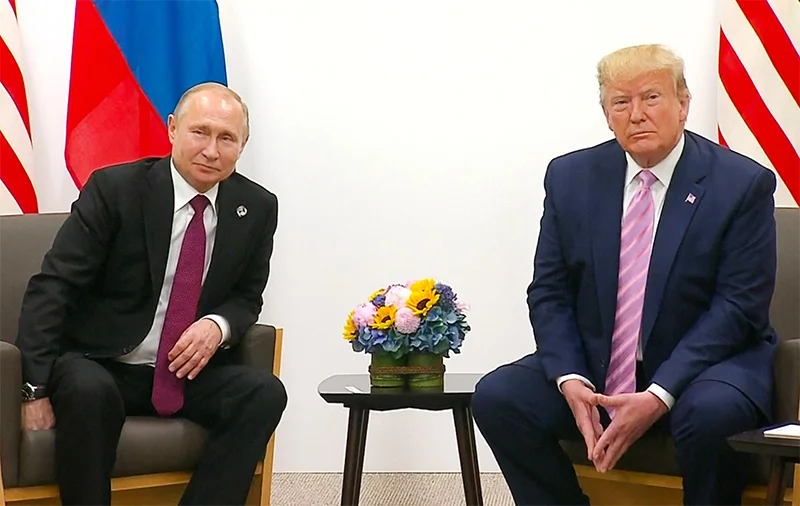
 It could be quite premature to claim that the US has closed ranks completely with the world’s foremost fascist states: Russia, China and North Korea. But there is no denying that the US is breaking with tradition and perceiving commonality of policy orientation with the mentioned authoritarian states of the East rather than with Europe and its major democracies at present.
It could be quite premature to claim that the US has closed ranks completely with the world’s foremost fascist states: Russia, China and North Korea. But there is no denying that the US is breaking with tradition and perceiving commonality of policy orientation with the mentioned authoritarian states of the East rather than with Europe and its major democracies at present.
Increasingly, it is seemingly becoming evident that the common characterization of the US as the ‘world’s mightiest democracy’, could be a gross misnomer. Moreover, the simple fact that the US is refraining from naming Russia as the aggressor in the Russia-Ukraine conflict and its refusal to perceive Ukraine’s sovereignty as having been violated by Russia, proves that US foreign policy is undergoing a substantive overhaul, as it were. In fact, one could not be faulted, given this backdrop, for seeing the US under President Donald Trump as compromising its democratic credentials very substantially.
Yet, it could be far too early to state that in the traditional East-West polarity in world politics, that the US is now squarely and conclusively with the Eastern camp that comprises in the main, China and Russia. At present, the US is adopting an arguably more nuanced approach to foreign policy formulation and the most recent UN Security Council resolution on Ukraine bears this out to a degree. For instance, the UN resolution in question reportedly ‘calls for a rapid end to the war without naming Russia as the aggressor.’
That is, the onus is being placed on only Ukraine to facilitate an end to the war, whereas Russia too has an obligation to do likewise. But it is plain that the US is reflecting an eagerness in such pronouncements to see an end to the Ukraine conflict. It is clearly not for a prolongation of the wasting war. It could be argued that a negotiated settlement is being given a try, despite current international polarizations.
However, the US could act constructively in the crisis by urging Russia as well to ensure an end to the conflict, now that there is some seemingly friendly rapport between Trump and Putin.
However, more fundamentally, if the US does not see Ukraine’s sovereignty as having been violated by Russia as a result of the latter’s invasion, we are having a situation wherein the fundamental tenets of International Law are going unrecognized by the US. That is, international disorder and lawlessness are being winked at by the US.
It follows that, right now, the US is in cahoots with those powers that are acting autocratically and arbitrarily in international politics rather than with the most democratically vibrant states of the West, although a facile lumping together of the US, Russia and China, is yet not possible.
It is primarily up to the US voting public to take clear cognizance of these developments, draw the necessary inferences and to act on them. Right now, nothing substantive could be done by the US voter to put things right, so to speak, since mid-term US elections are due only next year. But there is ample time for the voting public to put the correct perspective on these fast-breaking developments, internationally and domestically, and to put their vote to good use in upcoming polls and such like democratic exercises. They would be acting in the interest of democracy worldwide by doing so.
More specifically it is up to Donald Trump’s Republican voter base to see the damage that is being done by the present administration to the US’ standing as the ‘world’s mightiest democracy’. They need to bring pressure on Trump and his ‘inner cabinet’ to change course and restore the reputation of their country as the foremost democracy. In the absence of such action it is the US citizenry that would face the consequences of Trump’s policy indiscretions.
Meanwhile, the political Opposition in the US too needs to get its act together, so to speak, and pressure the Trump administration into doing what is needed to get the US back to the relevant policy track. Needless to say, the Democratic Party would need to lead from the front in these efforts.
While, in the foreign policy field the US under President Trump could be said to be acting with a degree of ambivalence and ambiguity currently, in the area of domestic policy it is making it all to plain that it intends to traverse a fascistic course. As has been proved over the past two months, white supremacy is being made the cardinal principle of domestic governance.
Trump has made it clear, for example, that his administration would be close to ethnic chauvinists, such as the controversial Ku Klux Klan, and religious extremists. By unceremoniously rolling back the ‘diversity programs’ that have hitherto helped define the political culture of the US, the Trump administration is making no bones of the fact that ethnic reconciliation would not be among the government’s priorities. The steady undermining of USAID and its main programs worldwide is sufficient proof of this. Thus the basis has been adequately established for the flourishing of fascism and authoritarianism.
Yet, the US currently reflects a complex awareness of foreign policy questions despite having the international community wondering whether it is sealing a permanent alliance with the main powers of the East. For instance, President Trump is currently in conversation on matters in the external relations sphere that are proving vital with the West’s principal leaders. For example, he has spoken to President Emmanuel Macron of France and is due to meet Prime Minister Keir Starmer of the UK.
Obviously, the US is aware that it cannot ‘go it alone’ in resolving currently outstanding issues in external relations, such as the Ukraine question. There is a clear recognition that the latter and many more issues require a collaborative approach.
Besides, the Trump administration realizes that it cannot pose as a ‘first among equals’, given the complexities at ground level. It sees that given the collective strength of the rest of the West that a joint approach to problem solving cannot be avoided. This is particularly so in the case of Ukraine.
The most major powers of the West are no ‘pushovers’ and Germany, under a possibly Christian Democratic Union-led alliance in the future, has indicated as much. It has already implied that it would not be playing second fiddle to the US. Accordingly, the US is likely to steer clear of simplistic thinking in the formulation of foreign policy, going forward.
Features
Clean Sri Lanka – hiccups and remedies
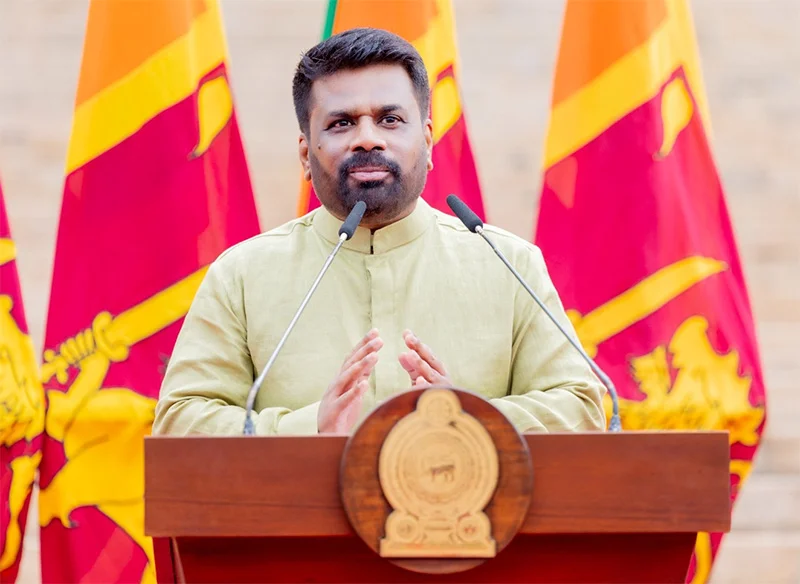
by Upali Gamakumara,
Upali.gamakumara@gmail.com
The Clean Sri Lanka (CSL) is a project for the true renaissance the NPP government launched, the success of which would gain world recognition. It is about more than just cleaning up places. Its broader objectives are to make places attractive and happy for people who visit or use services in the country, focusing more on the services in public institutions and organisations like the SLTB. Unfortunately, these broader objectives are not apparent in its theme, “Clean Sri Lanka,” and therefore there is a misconception that keeping the environment clean is the main focus.
People who realise the said broader objectives are excited about a cleaner Sri Lanka, hoping the President and the government will tackle this, the way they are planning to solve other big problems like the economy and poverty. However, they do not see themselves as part of the solution.
From the management perspective, the CSL has a strategic plan that is not declared in that manner. When looking at the government policies, one can perceive its presence, the vision being “A Prosperous Nation and a Beautiful Life,” the mission “Clean Sri Lanka” and the broader objectives “a disciplined society, effective services, and a cleaner environment.” If the government published these as the strategy, there would have been a better understanding.
Retaining the spirit and expectations and continuing the ‘Clean Sri Lanka’ project is equally important as much as understanding its deep idea. For this, it needs to motivate people, which differs from those motivators that people push to achieve selfish targets. The motivation we need here is to evolve something involuntarily, known as Drivers. Drivers push for the survival of the evolution or development of any entity. We see the absence of apparent Drivers in the CSL project as a weakness that leads to sporadic hiccups and free flow.
Drivers of Evolution
Drivers vary according to the nature of envisaged evolution for progress. However, we suggest that ‘the force that pushes anything to evolve’ would fit all evolutions. Some examples are: ‘Fitting to survival’ was the driver of the evolution of life. Magnetism is a driver for the unprecedented development of physics – young Einstein was driven to enquire about the ‘attraction’ of magnets, eventually making him the greatest scientist of the 20th century.
Leadership is a Driver. It is essential but do not push an evolution continually as they are not sprung within a system involuntarily. This is one of the reasons why CSL has lost the vigour it had at its inception.
CSL is a teamwork. It needs ‘Drives’ for cohesion and to push forward continually, like the Quality Improvement Project of the National Health Service (NHS) in England. Their drivers are outlined differently keeping Aims as their top driver and saying: Aims should be specific and measurable, not merely to “improve” or “reduce,” engage stakeholders to define the aim of the improvement project and a clear aim to identify outcome measures.
So, we think that CSL needs Aims as defined by NHS, built by stakeholder participation to help refine the project for continuous evolution. This approach is similar to Deming’s Cycle for continual improvement. Further, two more important drivers are needed for the CSL project. That is Attitudinal Change and Punishment. We shall discuss these in detail under Psychoactive Environment (pSE) below.
Aside from the above, Competition is another driver in the business world. This helps achieve CSL objectives in the private sector. We can see how this Driver pushes, with the spread of the Supermarket chains, the evolution of small and medium retail shops to supermarket level, and in the private banks and hospitals, achieving broader objectives of CSL; a cleaner environment, disciplined behaviuor, efficient service, and the instillation of ethics.
The readers can now understand the importance of Drivers pushing any project.
Three Types of Entities and Their Drives
We understand, that to do the transformation that CSL expects, we need to identify or adopt the drivers separately to suit the three types of entities we have in the country.
Type I entities are the independent entities that struggle for their existence and force them to adopt drivers involuntarily. They are private sector entities, and their drivers are the commitment of leadership and competition. These drivers spring up involuntarily within the entity.
Type II are the dependent entities. To spring up drivers of these entities commitment of an appointed trustee is a must. Mostly in state-owned entities, categorized as Boards, Authorities, Cooperations, and the like. Their drivers do not spring up within or involuntarily unless the leader initiates. The Government of a country also falls into this type and the emergence of drivers depends on the leader.
Type III entities have neither independent nor dependent immediate leader or trustee. They are mostly the so-called ‘Public’ places like public-toilets, public-playgrounds, and public-beaches. No team can be formed as these places are open to any, like no-man-land. Achieving CSL objectives at these entities depends on the discipline of the public or the users.
Clean Sri Lanka suffers the absence of drivers in the second and third types of entities, as the appointed persons are not trustees but temporary custodians.
The writer proposes a remedy to the last two types of entities based on the theory of pSE explained below.
Psychoactive Environment (pSE) –
The Power of Customer Attraction
Research by the writer introduced the Psychoactive Environment (pSE) concept to explain why some businesses attract more customers than others who provide the same service. Presented at the 5th Global Conference on Business and Economics at Cambridge University in 2006, the study revealed that a “vibe” influences customer attraction. This vibe, termed pSE, depends on Three Distinct Elements, which can either attract or repel customers. A positive pSE makes a business more attractive and welcoming. This concept can help develop Drivers for Type II and III entities.
pSE is not an all-inclusive solution for CSL, but it lays the foundation for building Drivers and motivating entities to keep entrants attractive and contented.
The structure of the pSE
The three distinct Elements are the Occupants, Systems, and Environment responsible for making a pSE attractive to any entity, be it a person, institution, organization, or county. Each of these elements bears three qualities named Captivators. These captivators are, in simple terms, Intelligent, Nice, and Active in their adjective forms.
pSE theorizes that if any element fails to captivate the entrant’s mood by not being Intelligent, Nice, or Active, the pSE becomes negative, repelling the entrant (customer). Conversely, the positive pSE attracts the entrants if the elements are Intelligent, Nice, and Active.
For example, think person who comes to a Government Office for some service. He sees that the employees, service, and environment are intelligent, nice, and active, and he will be delighted and contented. He will not get frustrated or have any deterioration in national productivity.
The Significance of pSE in CSL
The Elements and the Captivators are universal for any entity. Any entity can easily find its path to Evolution or Progress determined by these elements and captivators. The intangible broader objectives can be downsised to manageable targets by pSE. Achievements of these targets make the entrants happy and enhance productivity – the expectation of Clean Sri Lanka (CSL).
From the perspective of pSE, now we can redefine the Clean Sri Lanka project thus:
To make the Elements of every entity in Sri Lanka: intelligent, Nice, and Active.
How Would the pSE be A Remedy for The Sporadic Hiccups?
We have seen two possible reasons for sporadic setbacks and the discontinuity of some projects launched by the CSL. They are:
The absence of involuntary Drivers for evolvement or progress
Poor attitudes and behaviors of people and leaders
Remedy for the Absence of Drivers
Setting up a system to measure customer or beneficiary satisfaction, and setting aims can build Drivers. The East London NHS principles help build the Aims that drive type II & II entities. The system must be designed to ensure continual improvement following the Deming Cycle. This strategy will create Drivers for Type I & II entities.
This process is too long to explain here therefore we refrain from detailing.
Attitudinal Change
The most difficult task is the attitudinal and behavioural change. Yet it cannot be postponed.
Punishment as a strategy
In developed countries, we see that people are much more disciplined than in the developing countries. We in developing countries, give credit to their superior culture, mitigating ours as rudimental. The long experience and looking at this affair from a vantage point, one will understand it is not the absolute truth. Their ruthless wars in the past, rules, and severe punishment are the reasons behind this discipline. For example, anyone who fails to wear a car seatbelt properly will be fined 400 AUD, nearly 80,000 LKR!
The lesson we can learn is, that in Sri Lanka, we need strong laws and strict punishment together with a type of strategic education as follows.
Psychological Approach as a Strategy
The psychological theory of attitude formation can be used successfully if some good programmes can be designed.
All attitude formations start with life experience. Formed wrong or negative attitudes can be reversed or instilled with correct attitudes by exposure to designed life experiences. The programmes have been developed using the concepts of Hoshin Kanri, Brainstorming, Cause-and-Effect analysis, and Teamwork, in addition to London NTS Quality Improvement strategies.
The experience and good responses we received for our pSE programs conducted at several institutions prove and have built confidence in our approach. However, it was a time, when governments or organisations did not pay much attention to cultural change as CSL expects in the country.
Therefore, we believe this is a golden opportunity to take the CSL supported by the pSE concept.
Features
Visually impaired but ready to do it their way

 Although they are visually impaired youngsters, under the guidance of renowned musician Melantha Perera, these talented individuals do shine bright … hence the name Bright Light.
Although they are visually impaired youngsters, under the guidance of renowned musician Melantha Perera, these talented individuals do shine bright … hence the name Bright Light.
Says Melantha: “My primary mission is to nurture their talent and ensure their sustainable growth in music, and I’m thrilled to announce that Bright Light’s first public performance is scheduled for 7th June, 2025. The venue will be the MJF Centre Auditorium in Katubadda, Moratuwa.”
Melantha went on to say that two years of teaching, online, visually impaired youngsters, from various parts of the island, wasn’t an easy ride.
There were many ups and downs but Melantha’s determination has paid off with the forming of Bright Light, and now they are gearing up to go on stage.
According to Melantha, they have come a long way in music.
“For the past few months, we have been meeting, physically, where I guide them to play as a band and now they show a very keen interest as they are getting to the depth of it. They were not exposed to English songs, but I’ve added a few English songs to widen their repertoire.
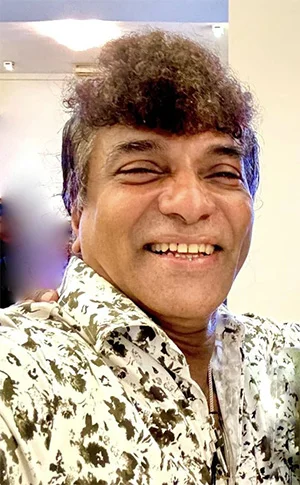
Melantha Perera: Invented a notation
system for the guitar
“On 7th June, we are opening up for the public to come and witness their talents, and I want to take this product island-wide, giving the message that we can do it, and I’m hoping to create a database so there will be a following. Initially, we would like your support by attending the show.”
Melantha says he didn’t know what he was getting into but he had confidence teaching anyone music since he has been in the scene for the past 45 years. He began teaching in 2015,
“When I opened my music school, Riversheen School of Music, the most challenging part of teaching was correcting tone deaf which is the theoretical term for those who can’t pitch a note, and also teaching students to keep timing while they sang and played.”
Melantha has even invented a notation system for the guitar which he has named ‘MelaNota’. He has received copyrights from the USA and ISO from Australia, but is yet to be recognised in Sri Lanka.
During Covid-19, Melantha showcased MelaNota online and then it was officially launched with the late Desmond De Silva playing one of his tunes, using MelaNota.
Melantha says that anyone, including the visually impaired, can play a simple melody on a guitar, within five minutes, using his notation system.
“I’ve completed the system and I’m now finalising the syllabus for the notation system.”
Melantha has written not only for the guitar, but also for drums, keyboards, and wind instruments.
For any queries, or additional information, you could contact Melantha at 071 454 4092 or via email at thebandbrightlight@gmail.com.
-

 Business3 days ago
Business3 days agoSri Lanka’s 1st Culinary Studio opened by The Hungryislander
-

 Sports4 days ago
Sports4 days agoHow Sri Lanka fumbled their Champions Trophy spot
-

 News6 days ago
News6 days agoKiller made three overseas calls while fleeing
-

 News5 days ago
News5 days agoSC notices Power Minister and several others over FR petition alleging govt. set to incur loss exceeding Rs 3bn due to irregular tender
-

 Features4 days ago
Features4 days agoThe Murder of a Journalist
-
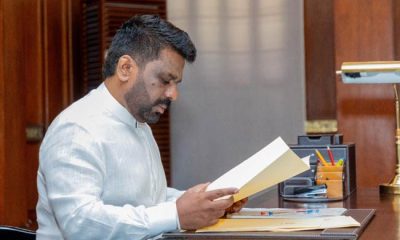
 Features4 days ago
Features4 days agoExcellent Budget by AKD, NPP Inexperience is the Government’s Enemy
-

 Sports4 days ago
Sports4 days agoMahinda earn long awaited Tier ‘A’ promotion
-

 News5 days ago
News5 days agoMobile number portability to be introduced in June











